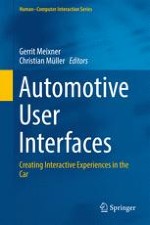2017 | OriginalPaper | Chapter
4. “It’s More Fun to Commute”—An Example of Using Automotive Interaction Design to Promote Well-Being in Cars
Authors : Marc Hassenzahl, Matthias Laschke, Kai Eckoldt, Eva Lenz, Josef Schumann
Published in: Automotive User Interfaces
Publisher: Springer International Publishing
Activate our intelligent search to find suitable subject content or patents.
Select sections of text to find matching patents with Artificial Intelligence. powered by
Select sections of text to find additional relevant content using AI-assisted search. powered by
